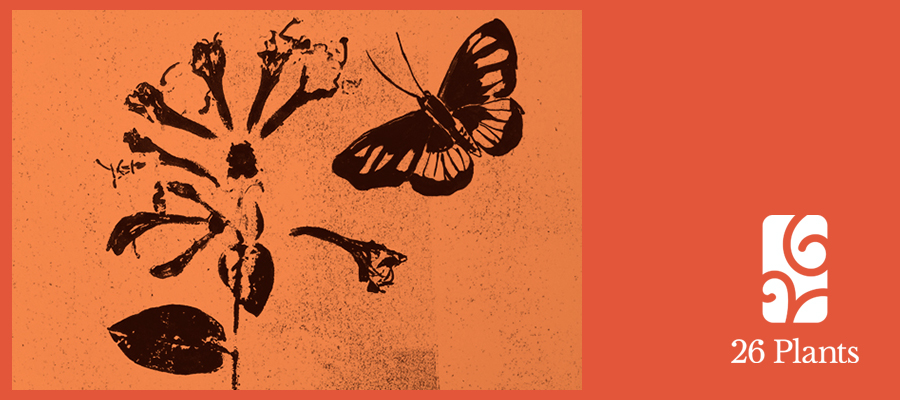Honeysuckle
Lonicera periclymenum
Sophie Gordon

A midsummer night’s dream
Thick, heady scent.
Perfume fanfare.
Irresistible lure.
In sun-dappled shade,
White Admirals glide,
navigating mellifluous waves
in search of safe harbour,
then set sail
leaving precious cargo
and hope.
Honeyed tones reach a crescendo
before night falls
and sleep-drunk dormice stir
in search of sweetness.
They sup,
then carry home bedding for raisin-sized young.
From starlit hedgerows
and woodland
blanketed
in velvet darkness,
to city side streets lamplit in apricot
Tendrils of fragrance grasp at the air,
reaching
through windows thrown open on sultry evenings,
twining their way into our slumber.
We lie, dreaming.
Lulled
by the thick, heady scent.
I hoped to find some honeysuckle in the wild while researching for this project. A writing retreat in the Kent countryside seemed like the perfect opportunity, away from my usual habitat of London streets. So, one morning, I laced up my trainers and headed out for a run – on the lookout for Shakespeare’s “luscious woodbine” among the hedgerows.
I found it almost immediately. But not because I spotted honeysuckle’s distinctive trumpet-like flowers, twining stems or leaves arranged in neat pairs. I didn’t find it by sight, but by smell.
In the rising heat of midsummer, it was like running into a wall of scent. The morning air seemed dense with heady fragrance. But this is nothing compared to warm summer evenings, when the scent intensifies to attract moths and other insects venturing out at dusk.
Honeysuckle is a haven for wildlife. Its tubular blooms offer the perfect vessel for moths to drink the sweet nectar. White Admiral butterflies rely specifically on the plant to act as a nursery; they lay their eggs on the ovate leaves, which the hatched caterpillars then feed on. Dormice seek out honeysuckle for both food and shelter. They feast on the nectar-rich flowers, and use the bark to build nests for their tiny young in the summer months.
Thriving best in partial shade, honeysuckle is at home in woodland and hedgerows. It always climbs clockwise, spiralling its way around branches and knitting together perfect nesting sites for birds. This corkscrew motion often distorts the branches of other plants – sometimes with beautiful results. A quick Google image search for “honeysuckle walking stick” serves an array of items which would look quite at home in Tolkien’s Middle-earth.
Wizard’s staff or not, there’s something quite magical about this alluring plant. Young girls in Victorian times were forbidden from bringing the flowers into their home, for fear that the sweet, heady scent would lead to suggestive dreams. People also once believed that honeysuckle around the doorway to a home would ward off evil spirits and bring good luck.
Sweetest of all, honeysuckle has long been considered a symbol of affection and fidelity. Given its importance to so much of our wildlife, perhaps its time we showed our own steadfast support to protect it.
Image: Tessa Simpson
